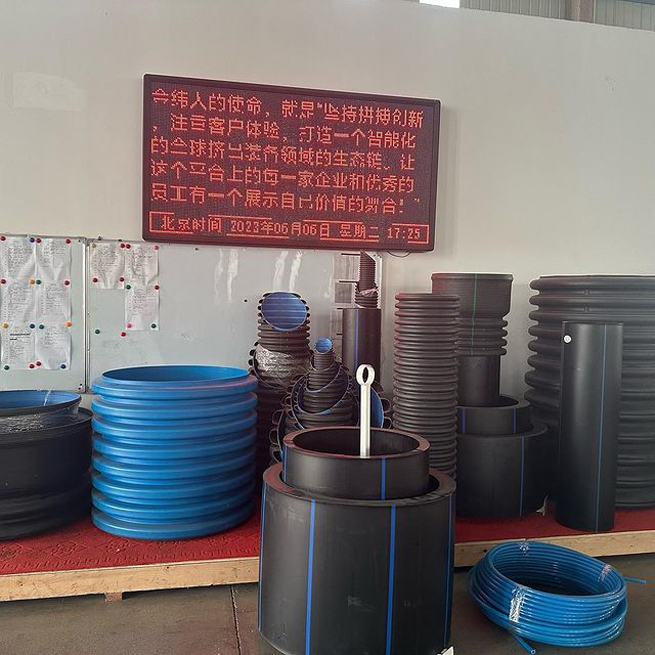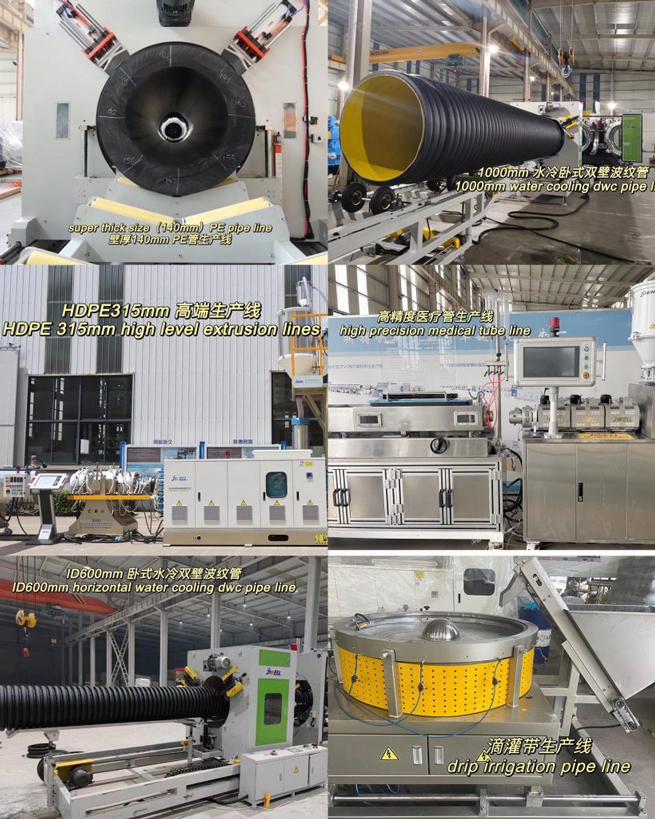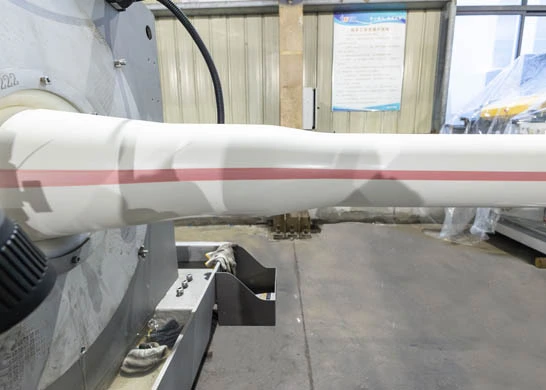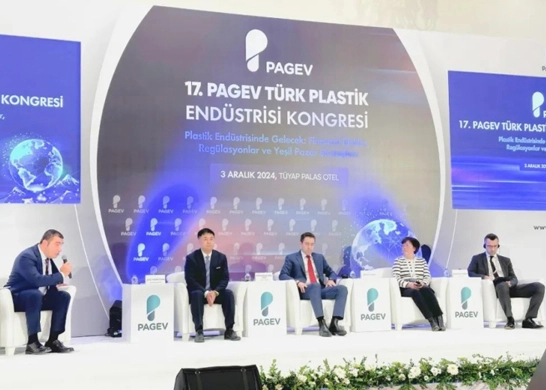
PVC
PVC (PolyVinylChloride) is generally classified into 7 levels based on the hardness and properties of the material (SG1-SG7), with a density of 1.4 g/cm ³ Left and right. The products below SG4 are generally soft products, and a large amount of plasticizer needs to be added during molding, which are mainly used for making artificial leather, wire and cable insulation, seals, etc. SG5 and above are hard products mainly used for making various pipes, such as drainage, electrical, postal and telecommunications pipes and fittings, various plates, sheets, profiles, etc. PVC has a shrinkage rate of 0.6-1.5% during molding, which has good mechanical properties, excellent electrical properties, strong self extinguishing, acid and alkali resistance, good chemical stability, and low price. It is a widely used general plastic. However, its development is hindered by its low usage temperature, which can reach up to around 80 ℃.
CPVC
CPVC Resin is a new type of engineering plastic made by chlorination modification of polyvinyl chloride (PVC) resin. This product is a white or light yellow odorless, odorless, and non-toxic loose particle or powder. After chlorination of PVC resin, the irregularity and polarity of molecular bonds increase, resulting in an increase in the solubility and chemical stability of the resin. This improves the material's heat resistance, acid resistance, alkali resistance, salt resistance, oxidant corrosion, and other corrosion properties. The mechanical properties of the thermal deformation temperature have been improved, with the chlorine content increasing from 56.7% to 63-69%, and the Vicat softening temperature increasing from 72-82 ℃ to 90-125 ℃. The maximum service temperature can reach 110 ℃, and the long-term service temperature is 95 ℃. Among them, CORZAN CPVC has better performance indicators. Therefore, CPVC is a new type of engineering plastic with broad application prospects.
UPVC
UPVC pipe takes PVC resin as the carrier, and has excellent characteristics such as accurate temperature sensing, timed melting, rapid absorption of effective ingredients of additives when reducing the attraction between resin molecular chains. At the same time, it uses the world famous calcium zinc composite heat stabilizer, which can capture, inhibit, absorb and neutralize the removal of hydrogen chloride when the resin is subjected to high temperature and melting, and conduct double bond Addition reaction with the polyolefin structure, Replace the active and unstable chlorine atoms in the molecule. Thus effectively and scientifically controlling the catalytic degradation and oxidative decomposition of resin in a molten state.
PP
PP pipe is a semi crystalline material. It is harder and has a higher melting point than PE. Due to the brittleness of homopolymer type PP at temperatures above 0 ℃, many commercial PP materials are irregular copolymers with 1-4% ethylene added or clamp type copolymers with higher ethylene content. Copolymer type PP materials have lower thermal distortion temperature (100 ℃), low transparency, low glossiness, and low rigidity, but have stronger impact strength. The strength of PP increases with the increase of ethylene content. The Vicat softening temperature of PP is 150 ℃. Due to its high crystallinity, this material has excellent surface stiffness and scratch resistance. PP does not have environmental stress cracking issues. Usually, PP is modified by adding glass fiber, metal additives, or thermoplastic rubber. The flow rate of PP has an MFR range of 1-40. PP materials with low MFR have good impact resistance but low ductility strength. For materials with the same MFR, the strength of the copolymer type is higher than that of the homopolymer type. Due to crystallization, the shrinkage rate of PP is quite high, generally ranging from 1.8 to 2.5%. And the directional uniformity of shrinkage rate is much better than materials such as PE-HD. Adding 30% glass additive can reduce the shrinkage rate to 0.7%. Both homopolymer and copolymer PP materials have excellent resistance to moisture absorption, acid and alkali corrosion, and solubility. However, it has no resistance to Aromatic hydrocarbon (such as benzene) solvents, chlorinated hydrocarbon (carbon tetrachloride) solvents, etc. PP also does not have antioxidant properties at high temperatures like PE.
Polypropylene (PP) is a lighter type of common plastic, with excellent electrical properties and can be used as a high frequency insulation material with resistance to moisture and heat. PP is a crystalline polymer that exhibits a large shrinkage rate (1.0% -1.5%) due to significant changes in specific volume and high molecular orientation during melt condensation. PP has little effect on reducing its viscosity by increasing temperature in the molten state. Therefore, in the molding process, the main focus should be on improving the injection pressure and shear rate to improve the molding quality of the product.
PE
The full name is Polystyrene, which is the simplest polymer organic compound in structure and the most widely used polymer material in the world today. It is polymerized from ethylene and divided into high-density polyethylene, medium density polyethylene, and low-density polyethylene according to different densities. Low density polyethylene is relatively soft and is often polymerized under high pressure; High density polyethylene has the characteristics of rigidity, hardness, and high mechanical strength, and is commonly used for low-pressure polymerization. High density polyethylene can be used as containers, pipelines, and high-frequency electrical insulation materials for radar and television. Low density (high-pressure) polyethylene is commonly used in large quantities. Polyethylene is waxy and has the same smooth feeling as wax. When it is not dyed, low-density polyethylene is transparent, while high-density polyethylene is opaque. Polyethylene is a high polymer chain connected by repeated – CH2 – units through the Addition reaction and polymerization of ethylene (CH2=CH2). The performance of polyethylene depends on its polymerization method; High density polyethylene (HDPE) is synthesized by Ziegler Natta polymerization under the catalysis of organic compounds under moderate pressure (15-30 atmospheres). The polyethylene molecules polymerized under this condition are linear and have long molecular chains, with a molecular weight of several hundred thousand. If free radical polymerization is carried out under high pressure (100-300MPa), high temperature (190-210 C), and peroxide catalyzed conditions, low-density polyethylene (LDPE) is produced, which has a branched structure.
Polyethylene is insoluble in water and has little water absorption. It only slightly dissolves in some chemical solvents, such as toluene and acetic acid, at temperatures above 70 ℃. However, particulate polyethylene can melt or solidify with temperature changes between 15 ℃ and 40 ℃, and it melts and absorbs heat as the temperature increases; When the temperature decreases, it solidifies and releases heat. And because it has a small water absorption capacity, is not easily damp, and has insulation performance, it is a good building material.
PB
Polybutylene was developed and applied in the early 1970s. Its material characteristics determined that it had high requirements for technology and equipment to produce profiles, and large investment in fixed assets. General small-scale manufacturers did not have the technical conditions and financial capacity for production.
PVDF
The appearance is semi transparent or white powder or particles, with tightly arranged molecular chains and strong hydrogen bonds. The oxygen index is 46%, non combustible, with a crystallinity of 65%~78%, a density of 1.17~1.79g/cm3, a melting point of 172 ℃, a thermal deformation temperature of 112~145 ℃, and a long-term use temperature of -40~150 ℃.
PVDF resin mainly refers to the homopolymer of vinylidene fluoride or the copolymer of vinylidene fluoride and other small amounts of fluorinated vinyl monomers. PVDF resin combines the characteristics of fluorine resin and general resin. In addition to good chemical corrosion resistance, high temperature resistance, oxidation resistance, weather resistance, and radiation resistance, it also has special properties such as piezoelectric, dielectric, and thermoelectric properties. It is currently the second largest production product in fluorinated plastics, The global annual production capacity exceeds 43000 tons. The application of PVDF is mainly concentrated in the three major fields of petrochemical industry, electronic and electrical industry and Fluoropolymer. Due to its good chemical resistance, processability, fatigue resistance and creep resistance, PVDF is one of the best materials for pumps, valves, pipes, pipe fittings, storage tanks and heat exchangers in the overall or lining fluid treatment system of petrochemical equipment. Its good chemical stability and electrical insulation performance enable the equipment manufactured to meet the requirements of TOCS and flame retardancy. It is widely used in the storage and transportation of high-purity chemicals in the semiconductor industry. In recent years, porous membranes, gel, diaphragms, etc. made of PVDF resin have been used in lithium secondary cells. At present, this use has become one of the fastest growing markets for PVDF demand. PVDF is one of the most important raw materials of Fluoropolymer. The Fluoropolymer prepared from PVDF has developed to the sixth generation. Because PVDF resin has excellent weather resistance, it can be used outdoors for a long time without maintenance. This kind of coating is widely used in power stations, airports, highways, high-rise buildings, etc. In addition, PVDF resin can also be modified by blending with other resins, such as PVDF and Acrylonitrile butadiene styrene to obtain composite materials, which have been widely used in architecture, automobile decoration, home appliance shell, etc.


 EN
EN 



